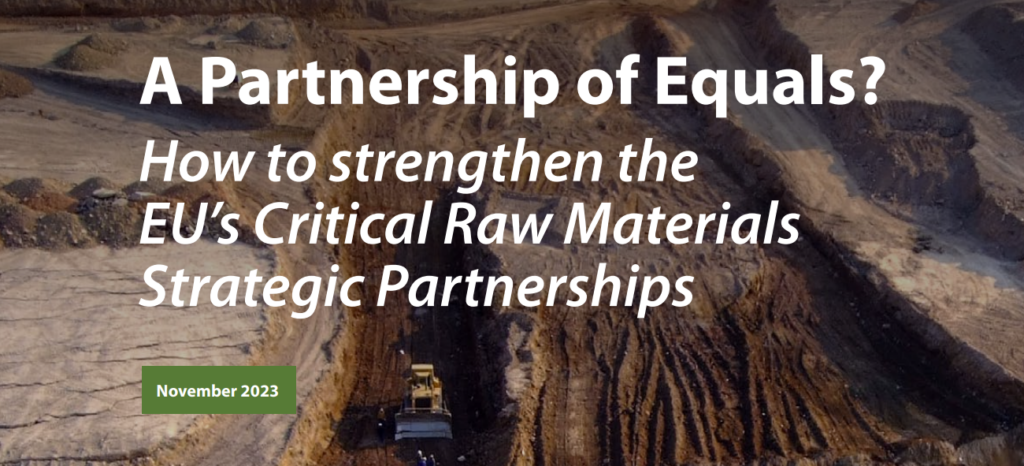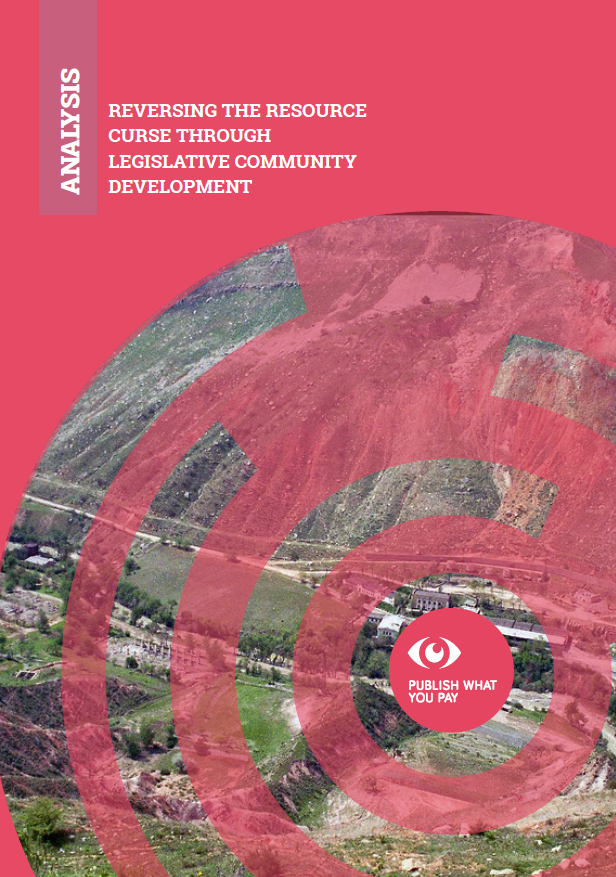This post was originally posted by PWYP Canada on their website.
In May/June of 2017 the first Extractive Sector Transparency Measures Act (ESTMA) reports were publicly filed in Canada, which for the first time gave the public access to data on project level royalty, tax, and other payments made by oil, gas, and mining companies to extract natural resources. With over 400 unique companies disclosing data, this represents an unprecedented opportunity to better understand revenues flows in the global extractive sector.
In response to this reporting, PWYP-Canada launched a new work program to do three things: 1) create a database of the payment data; 2) analyze several reports at the project level to better understand the project, corporate structure, and basis of reporting; and 3) use the aggregate data to undertake several country/regional-level analyses.
The second activity has led to a series of mini-case studies focused on the mining sector. We focused on the mining sector for several reasons: the majority of Canadian companies with international operations are mining companies, and Canadian mining companies disclose significantly more project-level data than oil and gas companies. These mini-case studies focus on individual mines or projects and have several broad objectives:
- They unpack the payments disclosed in ESTMA reports and provide further information from communications with the company and company filings about the payments.
- They provide some context for the project, including the history of the mine, an overview of the mining code, some information about the corporate structure, and a brief overview of any pertinent issues related to the mine (lawsuits, significant social unrest).
- They provide an analysis of the company reports that can help to inform civil society advocacy efforts in-country.
The mini-cases are an experiment. The power of this type of analysis is untested, but at a minimum, we hope that they will provide the community of data users with more information about how payments and payments to governments reports are calculated. At a maximum, we hope these cases are used to inform new, more in-depth analysis and in-country advocacy campaigns.
Resources
To conduct the research for these mini-cases, the researcher drew upon several filings made by public Canadian mining companies:
The researcher also examined other more generic company reporting:
The researcher also looked for general information about the fiscal regime in the country, examining:
The researcher was also provided a guide, in draft form, put together by Global Witness and Resources for Development Consulting which provides different methodologies for analyzing payments to government reports. This methodology provides guidance on how to conduct a royalty verification and audit. This process, at its simplest, involves determining three things:
- Production sold that year
- The average sales price (use the price disclosed by the company if available)
- The royalty rate
Hypothetical Example: Royalty Verification in the Gold Sector
2000 oz sold x 1200 USD/oz (average price) x 4% royalty
Royalty Verification or Audit
A royalty verification involves several methodological assumptions:
- The royalty is based production.
- The royalty payment was calculated based on production during the year the payment was made (royalty paid in 2016 = calculated based on 2016 production).
- The royalty is fixed (i.e. not a variable rate royalty).
- The royalty payment has no deductions for costs accrued during production by the company.
For a description of different types of royalties see Mining Contracts: How to Read and Understand Them (pg. 68-73).
Were the assumptions true in the cases we looked at?
- Almost all the royalties we looked at were based on production (and not profit)
- Many were not paid on production/sales from the year when the ESTMA payment was made. For example, in one case cash payments disclosed in the ESTMA report were based on the first three quarters of 2016 and the last quarter of 2015. Given that the company disclosed project level production on a quarterly basis, we were able to tailor the royalty verification to this scenario.
- A few varied depending on the sales price. In these cases, there was sometimes sufficient data to tailor the royalty verification to this scenario.
- Several had allowable deductions for transportation and refining. Unfortunately, it is nearly impossible to verify allowable cost deductions from a royalty payment, as it would require further information about those costs and how they are calculated.
Regardless of whether the assumptions proved to be true, royalty verifications are an important tool that civil society can use to audit royalty payments.
Single Asset Companies
Many of the companies we looked at were single asset companies or had only one asset in the country we looked at. Single asset companies are easier to analyze because their corporate reporting is based on production from only one project, thus the majority of the corporate data is already relevant to the project under examination.
Cash versus Accruals
It is important to remember that payments to governments reports are based on cash payments made in the company’s fiscal year to the relevant governments. In contrast, a company’s financial statements are based on accruals accounting. The accrual method of accounting, which is the most popular, records revenues and expenses when they are earned, regardless of when the money is received or paid. Thus we cannot expect a company’s financial statements to mirror their payments to government reports. Nevertheless, large discrepancies may warrant further investigation.
Structure
The structure and the information contained in the mini-cases can and should be subject to feedback. It may be that future mini-cases will have a different structure based on stakeholder feedback. However, the first are structured as follows:
- Company background and key financial data
- Corporate structure – flagging any concerns (tax haven subsidiaries, etc.) where applicable (found in a company’s Annual Information Form filed on www.sedar.com)
- A description of the project and a map
- Brief overview of mining in the country and any relevant issues (tax disputes, social unrest, lawsuits)
- An overview of the payments in the ESTMA report
- A royalty verification (projects selected were all in production and included royalty payments)
- A description of the payments in the ESTMA reports, including any notes and further detail provided by company reports and company communications
- Citations
The Development Process
To build the mini-cases, the researcher first put together an initial draft of the report, which was reviewed by the PWYP-Canada Director, who provided feedback and further guidance. For any type of analysis, expert peer review is a crucial step in the process. The second (sometimes third) draft was sent to a civil society stakeholder and the company for their review. Feedback from these exchanges was incorporated and at times, follow up questions were sent.
The process of receiving and incorporating feedback was lengthy, as sometimes the royalty verification needed to be completely redone. For example, in the case of the Sabodala Mine, it turns out that the payment Teranga Gold made to the Government of Senegal for royalties was for total production in 2015 and the first three financial three quarters of 2016. In other cases, a company provided information about a royalty that was previous unclear from our research. For example, Tahoe Resources provided clarity about how voluntary royalties are calculated and disclosed.
One thing that is clear is that companies are very willing to provide feedback on the cases and to help stakeholders better understand their in-company payments.
After integrating all the comments, the reports were finalized, formatted, and edited. You can access our completed and published case studies here, but watch this space for updates, as there are still more to come!
Case Selection and the Limitations of the Methodology
Some of the research conducted here was made easier because of the attributes of the cases selected:
In Canada, mining projects have more detailed information available at the project level, than both oil and gas companies and non-Canadian-listed mining companies. This is because Canadian mining companies have to file project-level Technical Reports which are often between 100 and 300 pages and can provide information about the fiscal regime, permits, economic/social/environmental risks, and financial models.
Canadian companies have to file Annual Information Forms (AIFs), which can be found on the company website or on SEDAR, which often include a relatively detailed organizational chart of the company structure.
Producing projects have larger payments that allow for more analysis.
What’s next?
The next step for PWYP-Canada is to work with the global coalition to mobilize these reports and assess how they may be able to impact advocacy plans or integrate with existing advocacy work. We then need to determine whether another round of cases would make a valuable contribution to the space and whether our budget will allow for it. We would definitely encourage other coalitions to consider trying out this methodology themselves and would be more than happy to support these efforts. We look forward to working together to mobilize the mini-cases, assess their impact, revise the methodology, and identify new cases.










